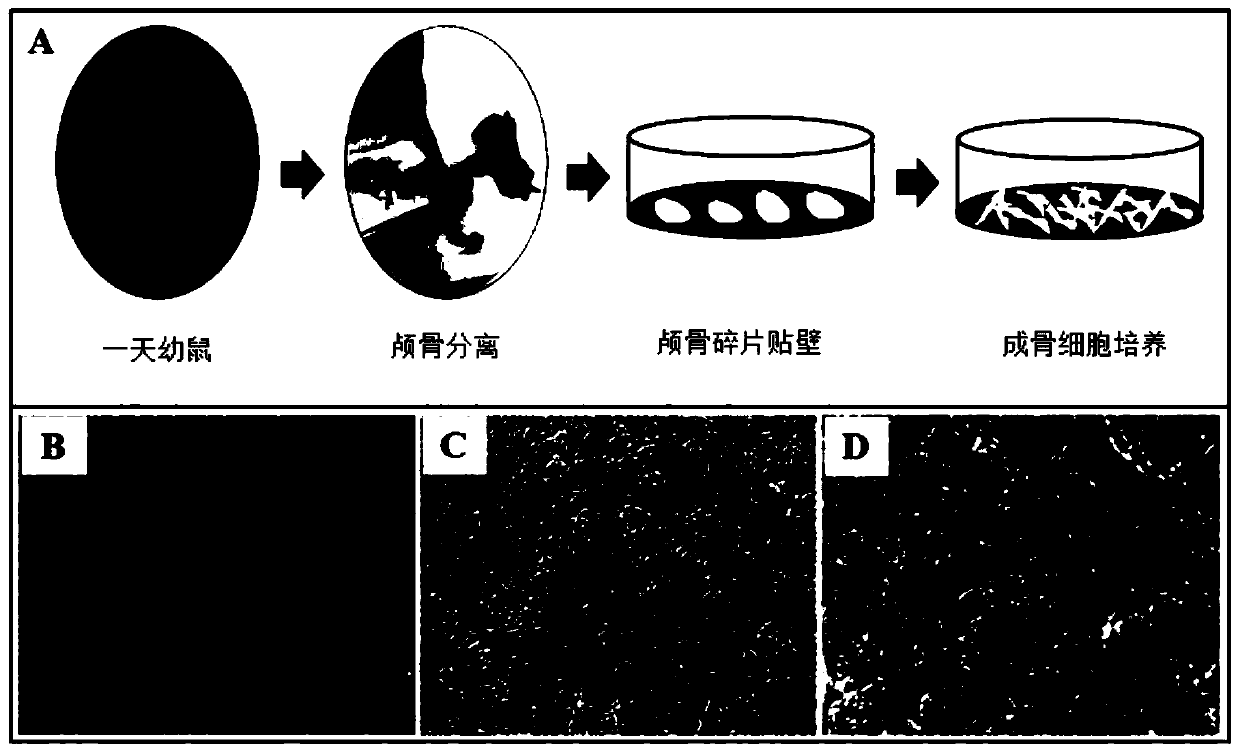Preparation method and application of bionic composite nanofiber stent material
A technology of scaffold materials and composite fibers, which is applied in the field of preparation of bionic composite nanofiber scaffold materials, can solve the problem that bionic bone scaffolds cannot meet good mechanical properties and biocompatibility at the same time, and achieve excellent hydrophilicity and good biophase The effect of capacitive, good flexibility
- Summary
- Abstract
- Description
- Claims
- Application Information
AI Technical Summary
Problems solved by technology
Method used
Image
Examples
Embodiment 1
[0045] 1. Preparation of PLLA / SF biomimetic composite nanofiber scaffold loaded with osteoblast extracellular matrix, the specific method is as follows:
[0046] a. Extraction of silk fibroin: after removing impurities from silkworm cocoons (Hebei Baoding Chinese herbal medicine retail and wholesale), place them in a mass of Na 2 CO 3 (Shanghai Lingfeng Chemical Reagent Co., Ltd.) in an aqueous solution, boil for 30-50 minutes for degumming, and then clean it with deionized water; repeat the above steps until the color of the aqueous solution after boiling has no obvious change, and the silk is pure white. At this time, sericin Remove it clean; wring out the moisture of the degummed silk, spread it loosely on the aluminum foil, degummed at 50°C, and then weigh it after drying; dissolve the dried silk in the ternary system CaCl with a bath ratio of 1:10 2 / CH 3 CH 2 OH / H 2 Dissolve in O (molar ratio 1:2:8) (Shanghai Lingfeng Chemical Reagent Co., Ltd.) solution, heat and st...
PUM
| Property | Measurement | Unit |
|---|---|---|
| thickness | aaaaa | aaaaa |
| diameter | aaaaa | aaaaa |
Abstract
Description
Claims
Application Information
 Login to View More
Login to View More - R&D
- Intellectual Property
- Life Sciences
- Materials
- Tech Scout
- Unparalleled Data Quality
- Higher Quality Content
- 60% Fewer Hallucinations
Browse by: Latest US Patents, China's latest patents, Technical Efficacy Thesaurus, Application Domain, Technology Topic, Popular Technical Reports.
© 2025 PatSnap. All rights reserved.Legal|Privacy policy|Modern Slavery Act Transparency Statement|Sitemap|About US| Contact US: help@patsnap.com



